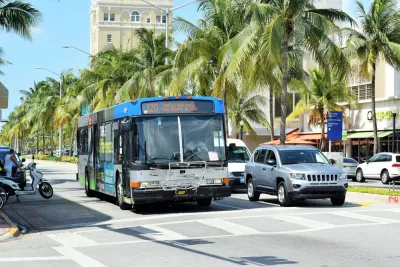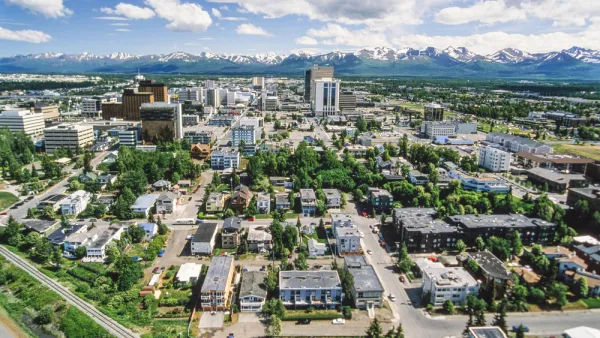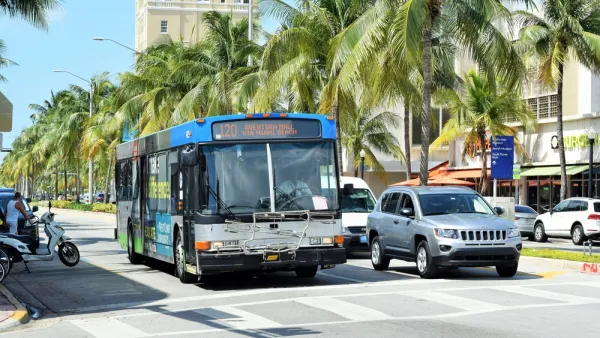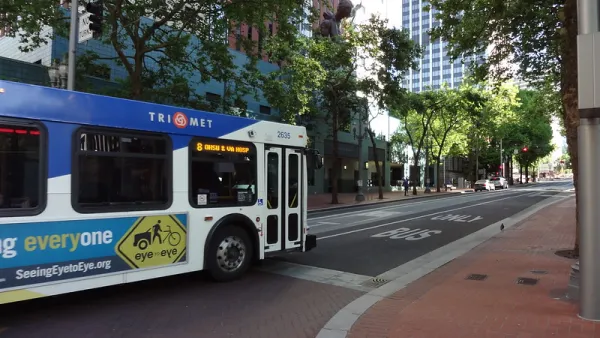The Miami-Dade Transit system includes only five routes with headways at 15 minutes or less during midday and only six percent of residents live near frequent bus service, according to a recent study.

"Transit Alliance Miami is busy making the county’s route network more efficient so that the bus won’t be considered the mode of last resort," according to an article by Linda Robertson.
"The Alliance, a nonprofit organization advocating for improved mobility and public transit, finished the first phase of its Better Bus Project on Friday and found that the critical choice facing transit planners and bus passengers boils down to frequency versus coverage. Should the network provide waiting times of 15 minutes or less or serve every corner of the sprawling county?"
According to Robertson's summary of the report, transit service is far from frequent or useful to most of the county's residents: "only five county routes have a bus arriving every 15 minutes or less during midday; most routes involve a minimum 30-minute wait. Although 60 percent of residents are near transit service, only 6 percent are near frequent transit service."
Jarrett Walker + Associates prepared the "Better Bus Project Choices Report" [pdf] for the Transit Alliance Miami and Miami-Dade’s Department of Transportation and Public Work. Walker followed the news article by Robertson with a blog post to describe some of the unique challenges facing the Miami-Dade bus transit system and any potential system redesign project.
Robertson concludes with a description of next steps for a possible system redesign for Miami-Dade County: "In the next phase of the Better Bus Project, the Transit Alliance will conduct another survey, hold more community workshops and present two network concepts in September."
FULL STORY: The campaign to fix Miami-Dade’s bus service is gaining traction, but how to fix it?

National Parks Layoffs Will Cause Communities to Lose Billions
Thousands of essential park workers were laid off this week, just before the busy spring break season.

Retro-silient?: America’s First “Eco-burb,” The Woodlands Turns 50
A master-planned community north of Houston offers lessons on green infrastructure and resilient design, but falls short of its founder’s lofty affordability and walkability goals.

Delivering for America Plan Will Downgrade Mail Service in at Least 49.5 Percent of Zip Codes
Republican and Democrat lawmakers criticize the plan for its disproportionate negative impact on rural communities.

Test News Post 1
This is a summary

Test News Headline 46
Test for the image on the front page.

Balancing Bombs and Butterflies: How the National Guard Protects a Rare Species
The National Guard at Fort Indiantown Gap uses GIS technology and land management strategies to balance military training with conservation efforts, ensuring the survival of the rare eastern regal fritillary butterfly.
Urban Design for Planners 1: Software Tools
This six-course series explores essential urban design concepts using open source software and equips planners with the tools they need to participate fully in the urban design process.
Planning for Universal Design
Learn the tools for implementing Universal Design in planning regulations.
EMC Planning Group, Inc.
Planetizen
Planetizen
Mpact (formerly Rail~Volution)
Great Falls Development Authority, Inc.
HUDs Office of Policy Development and Research
NYU Wagner Graduate School of Public Service





























